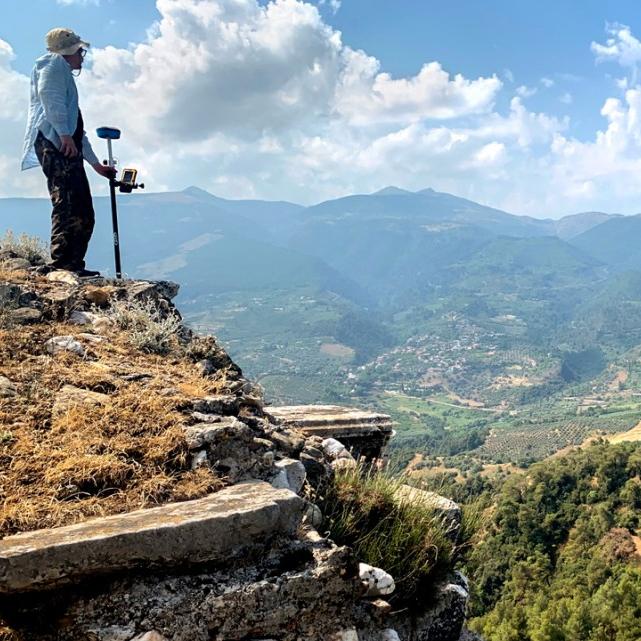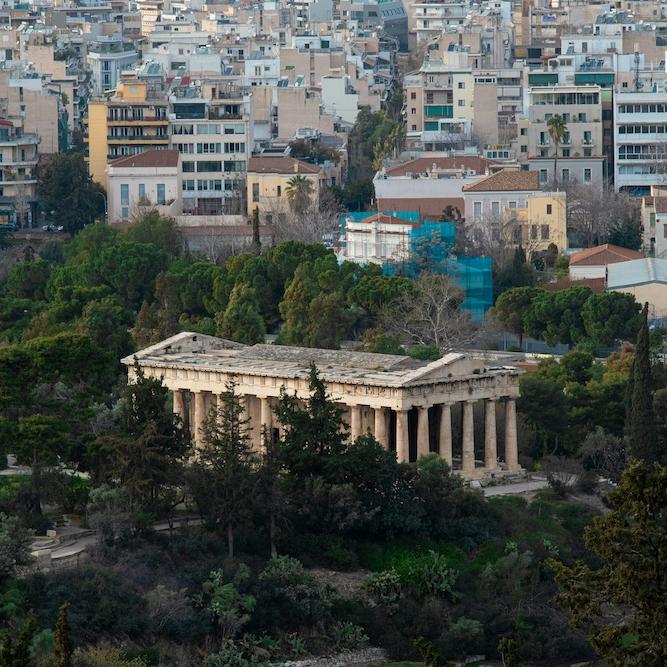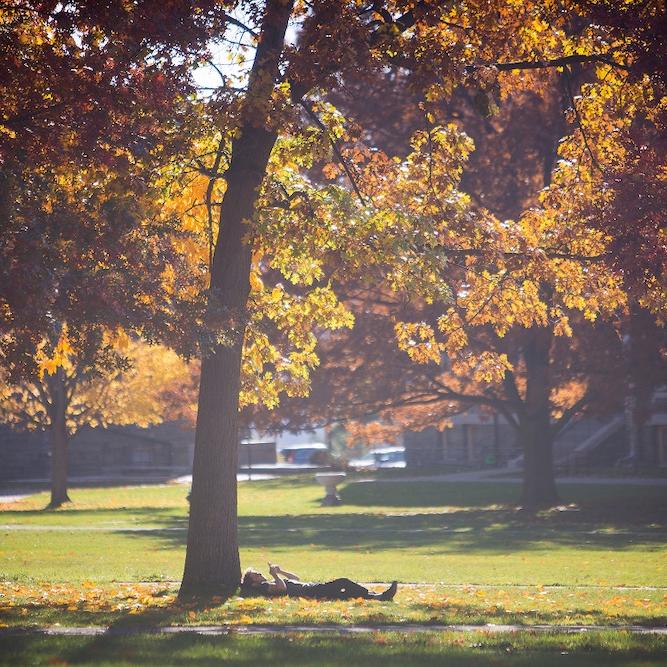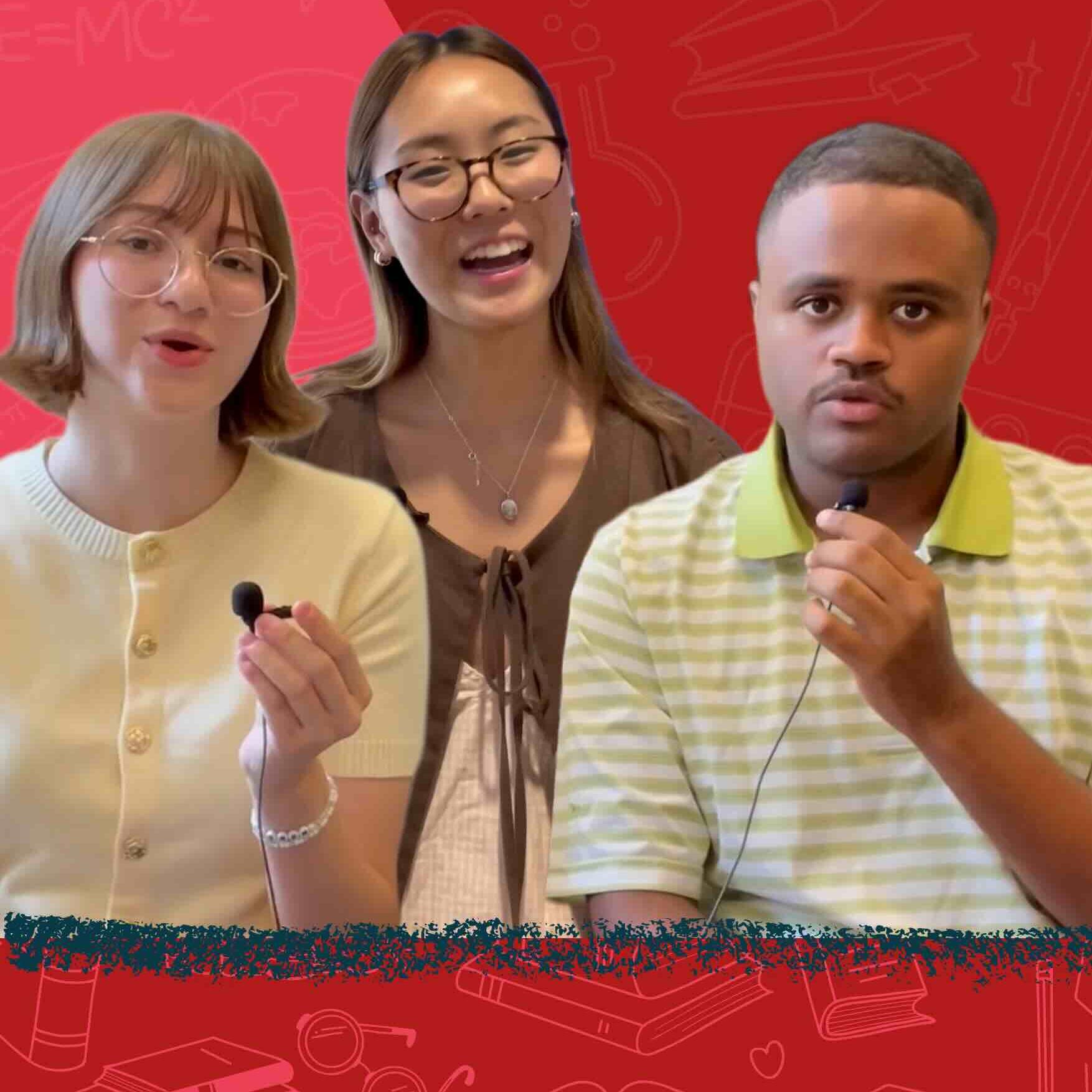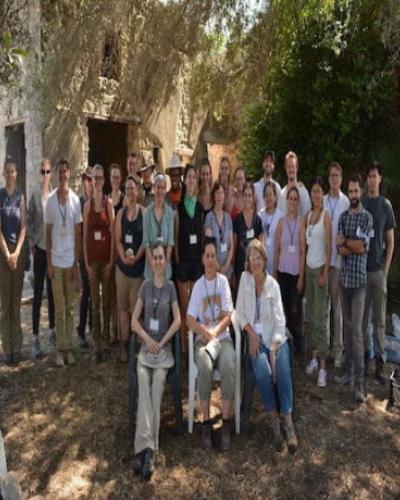From compiling digital databases to analyzing archaeological artifacts and digging at Pompeii, undergraduate students have opportunities to participate in a wide variety of Classics faculty projects at Cornell. Below is a sample of the work that undergraduate students are currently doing, as well as projects which are looking for more students to get involved.
Dimitrios Sparis (Classics and Physics, ‘20) has been spending the last two summers working on Jeff Rusten’s Thucydidean lexicon project. The online database allows users to search items and read the text in its entirety. Each lexical item lists an extensive definition with quotes from the text, frequencies, and occurrences sorted by context, semantic grouping, bibliography, and, in some cases, even images. Dimitrios' involvement with the project began after he took Rusten’s seminar on Greek Historiography, but he had already begun studying Thucydides in his first year writing seminar. Dimitrios started on the project by compiling lists of synonyms and antonyms and by editing parsings from the Perseus database. He has since shifted his focus to writing articles for some of the words, and, as Rusten praises, has made “important discoveries on Thucydides’ system of compound prepositions with verbs of motion.” Dimitrios says, “These articles reflect the project’s underlying philosophy, i.e. that Thucydides, like many Greek writers, employs the malleability of the Ancient Greek language and its extensive lexicon to communicate unique meanings which are both different from the common, generic definitions one learns in Introduction to Attic Greek, as well as from how other authors use the same words.” Although Dimitrios' personal research interests focus more on the ancient history of the Hellenistic Eastern Mediterranean, he says, “As a lover of the classical world, the project has provided a wonderful lesson in the beauty of Ancient Greek, and has also evidenced to me that a career of classical inquiry and study is a future I would like to pursue. As an undergraduate in Classics, I could not ask for much more.” Students with an interest in Thucydides (or Plato, Euripides, or Aristophanes - Rusten’s next projects) and some skill in web development are encouraged to contact Professor Rusten.
Eric Rebillard has been working on the Classical Works Knowledge Base since 2010. The program began as a resolution service but now includes a searchable database. Users are able to search through about 1,550 ancient Greek and Latin authors (5,200 texts) to resolve most citations of texts -- whether in a canonical, abbreviated form, or in a modern language -- and to find an expression for it in a number of full-text services, including the Packard Humanities Institute, the Perseus Digital Library, and the Thesaurus Linguae Graecae. Rebillard is looking to hire undergraduate students who are interested in updating and adding to the database itself in the coming months.
Boris Botchev (Earth and Atmospheric Sciences and Archaeology, ‘20) began working in the dendrochronology lab with Carol Griggs and Brita Lorentzen after his Introduction to Dendrochronology course with Sturt Manning in his junior year. He has been involved with a number of projects, from Mediterranean shipwreck materials and samples from Cyprus to pollution and tree growth around Onondaga Lake near Syracuse, NY. One project includes preparing and reading samples taken from different forest areas around Cyprus with different amounts of precipitation. This allows them, as Lorentzen says, to “reconstruct precipitation back beyond current meteorological records and have a year-by-year reconstruction of drought severity and duration around different parts of the island.” Boris describes the most satisfying part of the work as “seeing similar growth patterns and trends emerge and helping to establish a definitive age of the sample.” Another project looks at wood collected from the Byzantine painted churches from the Troodos Mountains in Cyprus. The project, co-directed by Manning and Lorentzen, uses dendrochronology to put together a more precise timeline for the construction of the churches, the associated monumental buildings, and the artwork contained within them. Boris is also working with Lorentzen on stable isotope analyses of tree rings from Lebanon and Cyprus, which is part of a project led by Lorentzen and Manning examining the relationship between climate and plague outbreaks in the eastern Mediterranean. Both of these projects have only recently launched, and the lab plans on including more undergraduates in both fieldwork and laboratory analysis in the coming semesters.
Caitie Barrett has been working with a number of undergraduate students on her archaeological project in Pompeii. Her Casa della Regina Carolina project, which she co-directs with Kathryn Gleason and Annalisa Marzano (University of Reading), focuses on surveying the elite dwelling called Casa della Regina Carolina and excavating its garden, with the aim of understanding the role of domestic material culture in the social, political, and cultural changes that followed Pompeii’s incorporation into the Roman empire. Joshua Johnson (Classics and Africana Studies, ‘21) participated last summer as part of the excavating team, which included digging, sorting, pottery washing, and sieving. He says, “Working on this project allowed me to get hands-on experience actually recovering objects from the ground. Understanding the complete process of an object from creation, to being hidden, and then recovery is crucial in shaping a full picture.”  He has already begun applying this experience to his own research project: a virtual museum alongside an online exhibition. “Working at Pompeii also introduced me to the idea of archaeology in the United States,” he says. He is looking forward to pursuing this further with work on slave plantations and other objects related to American slavery, as he is “always looking for ways to connect my Classics work with Africana Studies.”
He has already begun applying this experience to his own research project: a virtual museum alongside an online exhibition. “Working at Pompeii also introduced me to the idea of archaeology in the United States,” he says. He is looking forward to pursuing this further with work on slave plantations and other objects related to American slavery, as he is “always looking for ways to connect my Classics work with Africana Studies.”
Madeline Crawford (Archaeology, ‘20) participated in Barrett’s project last summer and will be returning this summer as well. Madeline was also on the excavation team, and enjoyed digging through the dirt and sorting through artifacts -- bone, potsherds, tesserae, etc. She describes her favorite part of the project as the “excitement of somebody finding an important or cool artifact like a big piece of fresco or a loom weight.” “I’m considering graduate school in archaeology or archaeology-related fields,” Madeline says, “so this project helped me explore a little more of what I might want to do and allowed me to gain hands-on experience in archaeological research.” This summer, the team will be expanding its excavations to expose the earlier house that was uncovered below the garden last season.
Photos courtesy of Joshua Johnson, Madeline Crawford, and the CRC Pompeii webpage

